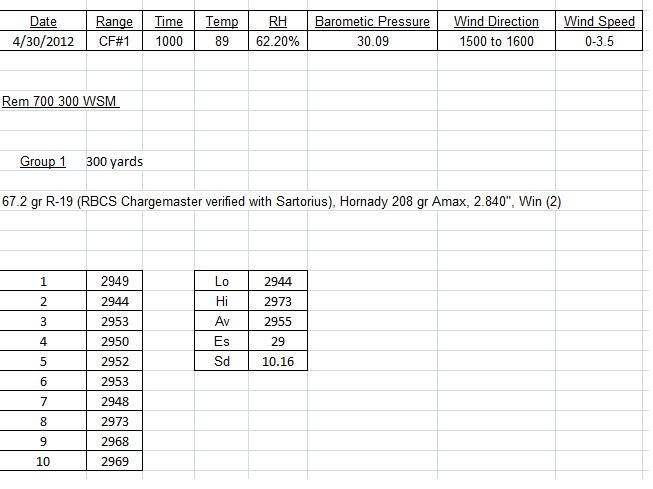I picked up a Sartorius AY-123 scale a few months back, with the intent of using it to increase the effectiveness of my hand loads. I'll never get a Prometheus, so this (for me) is the next level of accuracy in thrown charges. I attempted to use the scale right after buying it, but I never could get a repeatable zero. I learned that I had not given the scale a proper warmup cycle, so my impatience was affecting the trial.
Today, I set out to test charges thrown by my Chargemaster and see if I could get one kernel accuracy out of the Sartorius. I had 49 (#50 was lost on the mile tower at NTRP, never to be found) pieces of once fired Winchester .300 wsm brass prepped. I ran 49 charges of 67.2 gr of R-19 on my RCBS Chargemaster. I then took 25 and reweighed the charge on the Sartorius. The results were as follows:

I then took the 25 and got them to 67.20 gr, down to the kernel. I left the other 24 as they were thrown, to use as my standard. Next week, I'll shoot the 49 over my chronograph and check accuracy and performance at 100, 300, 500 & beyond.
I'm already getting .4 moa accuracy with the CM thrown loads, so I'm looking forward to seeing if I shoot well enough to notice a difference in the Sartorius loads. I'm getting the hang of the new scale and I will see if it's worth the extra effort.
More to come.
Today, I set out to test charges thrown by my Chargemaster and see if I could get one kernel accuracy out of the Sartorius. I had 49 (#50 was lost on the mile tower at NTRP, never to be found) pieces of once fired Winchester .300 wsm brass prepped. I ran 49 charges of 67.2 gr of R-19 on my RCBS Chargemaster. I then took 25 and reweighed the charge on the Sartorius. The results were as follows:

I then took the 25 and got them to 67.20 gr, down to the kernel. I left the other 24 as they were thrown, to use as my standard. Next week, I'll shoot the 49 over my chronograph and check accuracy and performance at 100, 300, 500 & beyond.
I'm already getting .4 moa accuracy with the CM thrown loads, so I'm looking forward to seeing if I shoot well enough to notice a difference in the Sartorius loads. I'm getting the hang of the new scale and I will see if it's worth the extra effort.
More to come.






